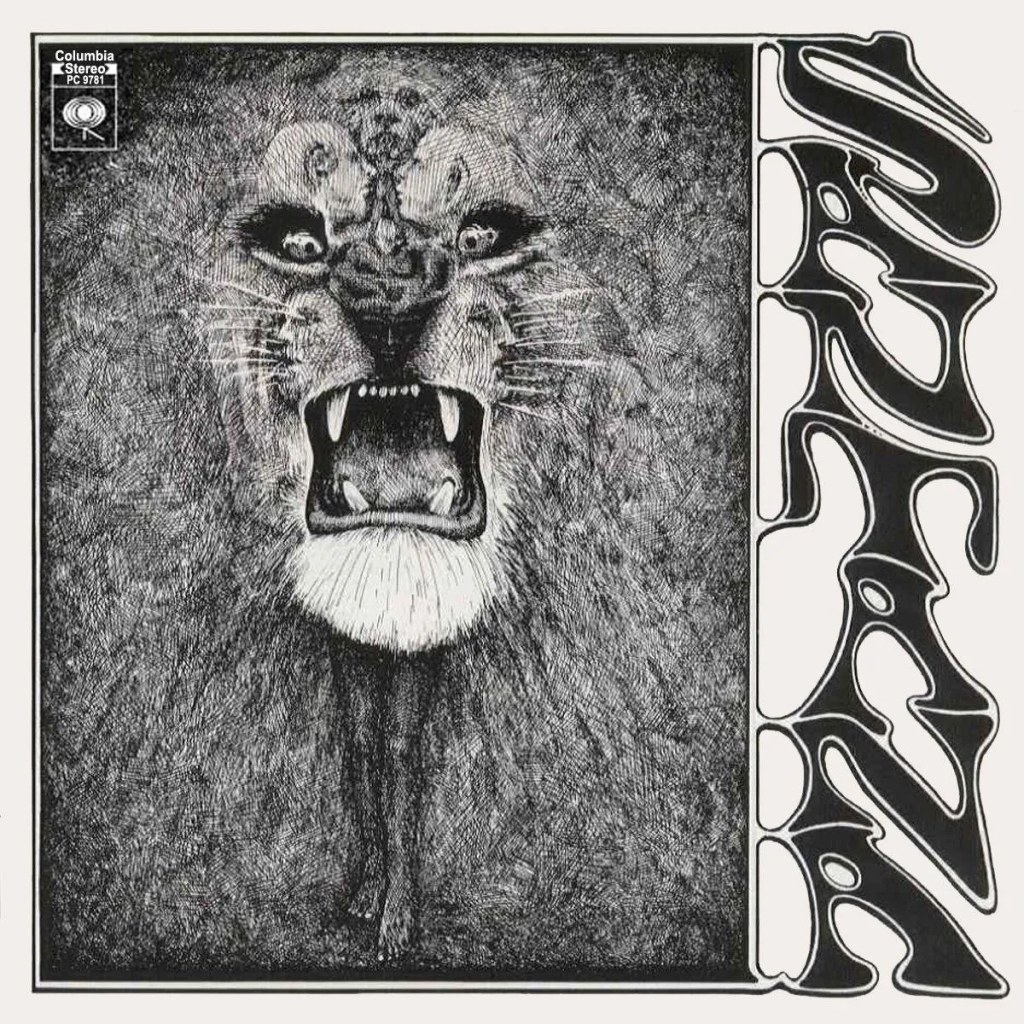The Majestic Power Of Santana Lion: Unleash Your Inner Roar With Our Captivating Offer!
Santana Lion: The Majestic and Powerful Beast
Welcome, Lions Enthusiast, to an exciting journey into the world of the Santana Lion! In this article, we will explore the fascinating characteristics, history, advantages, and disadvantages of this magnificent creature. Prepare to be amazed as we delve into the secrets of one of nature’s most majestic beasts.
Introduction
The Santana Lion, also known as Panthera leo santanae, is a rare subspecies of lion found exclusively in the remote Santana National Park in Africa. With its distinctive features and unique habitat, this lion has captured the attention of wildlife enthusiasts and researchers alike.
2 Picture Gallery: The Majestic Power Of Santana Lion: Unleash Your Inner Roar With Our Captivating Offer!


These lions are known for their exceptional strength, agility, and majestic appearance. They possess a muscular build, with males weighing up to 500 pounds and measuring around 10 feet in length, including their tail. Their iconic golden mane distinguishes them from other lion subspecies, making them a sight to behold.
Despite their grandeur, Santana Lions face numerous challenges in their survival. Habitat loss, poaching, and conflicts with humans have led to a decline in their population. Understanding and raising awareness about these remarkable creatures are crucial for their conservation.
What Makes Santana Lions Unique?

Image Source: vinyl-records.nl
🦁 Santana Lions are known for their incredible strength and agility. They possess powerful limbs and can run at speeds of up to 50 miles per hour.
🦁 The distinctive golden mane of the male Santana Lions serves both as a symbol of dominance and protection during territorial disputes.

Image Source: i0.wp.com
🦁 Santana Lions have adapted to the harsh conditions of the Santana National Park, where they must endure extreme temperatures and limited water sources.
🦁 These lions have a complex social structure, with a dominant male leading a pride consisting of several lionesses and their cubs.
🦁 Santana Lions are skilled hunters, capable of taking down large prey such as zebras and wildebeests.
🦁 Their unique habitat provides them with ample opportunities to observe and interact with other fascinating wildlife species.
🦁 Santana Lions play a crucial role in maintaining the balance of the ecosystem, as they help control the population of herbivores in the Santana National Park.
Who Can Encounter the Santana Lion?
🌍 The Santana National Park, located in the heart of Africa, is the only place where the Santana Lion can be found. It is a protected area that offers visitors a chance to witness the beauty of these majestic creatures firsthand.
🌍 Wildlife enthusiasts, photographers, and nature lovers from around the world flock to the Santana National Park in hopes of catching a glimpse of these elusive lions.
🌍 Researchers and conservationists are actively studying Santana Lions to better understand their behavior, habitat requirements, and conservation needs.
🌍 Local communities surrounding the park play a vital role in protecting these lions and their habitat, as their involvement is crucial for the long-term survival of the species.
When to Visit Santana National Park?
✨ The best time to visit Santana National Park is during the dry season, which typically occurs between June and October. During this time, the vegetation is less dense, making it easier to spot the Santana Lions.
✨ The park is open to visitors all year round, but it is essential to check weather conditions and make necessary arrangements before planning a visit.
✨ It is advisable to book safari tours well in advance to ensure availability and maximize the chances of encountering these magnificent creatures.
Where Can You Find Santana Lions?
🗺️ Santana Lions inhabit the Santana National Park, a vast wilderness spanning over 1,000 square miles in Africa.
🗺️ The park is located in a remote region, ensuring minimal human disturbance and preserving the natural habitat of the Santana Lions.
🗺️ Santana National Park offers various accommodation options, ranging from luxury lodges to camping sites, allowing visitors to experience the beauty of the park while respecting the lions’ natural environment.
Why Should We Protect Santana Lions?
⭐ Santana Lions are an integral part of the Santana National Park’s ecosystem, helping maintain the balance between predator and prey populations.
⭐ Protecting Santana Lions ensures the preservation of a unique subspecies that contributes to the biodiversity of the African continent.
⭐ By safeguarding the habitat of Santana Lions, we also protect other wildlife species that rely on the park for their survival.
⭐ The presence of Santana Lions in the Santana National Park attracts tourists, which benefits local communities through eco-tourism and contributes to the regional economy.
⭐ Preserving Santana Lions for future generations allows us to learn more about their behavior, genetics, and potential contributions to scientific research.
How Can We Protect Santana Lions?
🌿 Collaborating with local communities to raise awareness about the importance of conservation and promoting sustainable practices.
🌿 Implementing strict anti-poaching measures to combat illegal hunting and trade of lion parts.
🌿 Supporting research initiatives that focus on understanding Santana Lions’ behavior, population dynamics, and habitat requirements.
🌿 Encouraging responsible tourism that respects the natural habitat of the Santana Lions and minimizes human impact on their environment.
🌿 Working with international organizations and governments to develop and enforce legislation that protects the Santana Lions and their habitat.
Advantages and Disadvantages of Santana Lions
Advantages:
1. 🟢 Ecological Balance: Santana Lions play a vital role in regulating herbivore populations, preventing overgrazing and maintaining a healthy ecosystem.
2. 🟢 Tourist Attraction: The Santana Lions draw visitors from all over the world, contributing to the local economy through eco-tourism.
3. 🟢 Scientific Research: Studying Santana Lions provides valuable insights into lion behavior, ecology, and genetics.
4. 🟢 Cultural Heritage: The Santana Lions hold cultural significance for local communities, who view them as symbols of strength and power.
5. 🟢 Conservation Focus: The conservation efforts directed towards Santana Lions indirectly benefit other endangered species and their habitats within the Santana National Park.
Disadvantages:
1. 🔴 Human-Wildlife Conflict: As human settlements encroach upon lion territories, conflicts arise, posing threats to both humans and Santana Lions.
2. 🔴 Poaching: Santana Lions are targeted by poachers for their valuable body parts, such as bones and skins, which are in demand for traditional medicine and illegal trade.
3. 🔴 Habitat Loss: Deforestation and land degradation reduce the available habitat for Santana Lions, leading to population decline and fragmentation.
4. 🔴 Disease Transmission: Close proximity between humans and lions increases the risk of disease transmission, potentially impacting both populations.
5. 🔴 Climate Change: The effects of climate change, such as droughts and extreme weather events, can disrupt the Santana Lions’ habitat and prey availability.
Frequently Asked Questions (FAQs)
1. Are Santana Lions endangered?
🦁 Yes, Santana Lions are considered critically endangered due to habitat loss and poaching. Conservation efforts are crucial to their survival.
2. How many Santana Lions are left in the wild?
🦁 It is estimated that there are fewer than 300 Santana Lions remaining in the wild, making them one of the most endangered lion subspecies.
3. Can I volunteer to help protect Santana Lions?
🦁 Yes, various organizations offer volunteer programs focused on Santana Lion conservation. These programs provide opportunities to contribute to their protection and research.
4. Are Santana Lions aggressive towards humans?
🦁 Santana Lions generally avoid human interactions. However, as with any wild animal, it is essential to maintain a safe distance and respect their natural behavior.
5. How can I support the conservation of Santana Lions?
🦁 You can support the conservation of Santana Lions by donating to reputable organizations dedicated to their protection, raising awareness, and promoting responsible tourism.
Conclusion
In conclusion, the Santana Lion is a remarkable creature that captivates our imagination with its majestic appearance and powerful presence. As we continue to learn about and appreciate the Santana Lions, it is crucial that we work together to protect their habitat, raise awareness, and support conservation efforts. By doing so, we can ensure that future generations will have the opportunity to witness the beauty and magnificence of these extraordinary creatures in their natural environment.
Final Remarks
Let us remember that the conservation of wildlife, such as the Santana Lion, is not a solitary effort but a collective responsibility. It is up to each one of us to make a difference, whether through small actions or significant contributions. Together, we can safeguard the Santana Lions and preserve the rich biodiversity of our planet for generations to come.
This post topic: Lions


